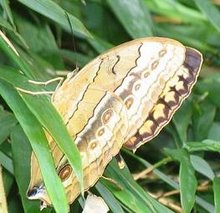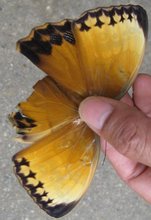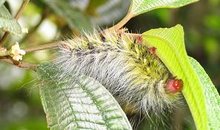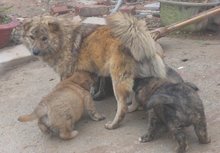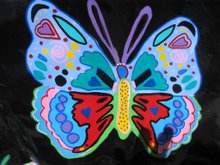Sunday, May 27, 2007
I'm Back, I'm Home
I've uploaded some of my photos from my Vietnam trip to Photobucket. There are a lot of ads, but this site allows me to share my photos with anyone for free. If you click on the images you'll see them full size. Please let me know what you think!
Thursday, May 17, 2007
Winners and a New Challenge with a Prize
1. Cambodia, Laos and China
2. Invertebrates--no backbones
3. Charles (or Charlie) M. Russell
Good work!
All About Butterflies and Another Quiz with a Prize
Vu Van Lien is keeping track of what is happening to the butterflies in Tam Dao National Park because they are an indicator species, just like the macro invertebrates we studied in the fall.
The first two people to post correct answers to all three questions win a special prize. There are three questions, but the third one is down lower in this post.
Question one: what is an indicator species?
Question two: why should we study indicator species? In other words, what types of important information do we learn from what happens to them?
Here are some interesting facts I’ve learned about butterflies:
You can safely hold a butterfly or moth by gently holding its body right below the head—one finger on top, one on the bottom. See photo of this.
If you want to see a butterfly, look during the hours of 9 am to 4 pm when they are the most active. If you look carefully you will also see many small moths, which shows that not all moths fly at night.
Butterflies sleep in trees and love the sun.
Only four species of butterfly her in Tam Dao fly in the fog, which we’ve had every day.
Forest butterflies are darker than open field or lowland butterflies.
The butterfly’s antenna can sense mates and food plants.
Some caterpillars eat flowers rather than leaves.
In colder climates some butterflies and caterpillars can hibernate for up to a year in bark of a tree, branches, and even underground.
I had read this fact but was not sure it was true until Lien confirmed it—while in the chrysalis or cocoon, the caterpillar turns completely into liquid to reform into a butterfly. This is amazing to me!
Question number 3: Name one common butterfly in the Spokane area that is not a painted lady or a monarch. Make sure the spelling is correct. You may need to do some research—perhaps Dianne has a book in her library. I believe that I have a book of insects on the shelf near the classroom door and robin might have some books as well. As a last resort, with parent permission you could do an internet search at home using the key words Spokane butterfly local. If these words don’t help, you can ask your parents or Robin or Joy for other key words to search.
The Winners
1. India
2. 300-500
3. Mulberry trees do not grow in many places in the United States, and silk worms need them to eat. Interestingly, they do grow in Las Vegas, and many teachers have them in their classrooms!
You two have won some special prizes from Vietnam when I return.
Great work!
Three Teachers--Jeff, Rachel and Beth
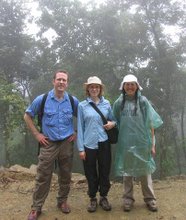
Red and Yellow
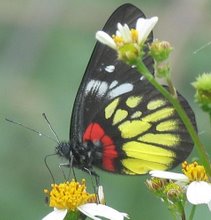
This one is beautiful and also quite common
Rare Green Butterfly
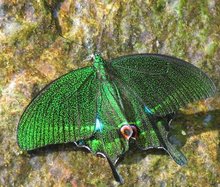
This one is drinking water from a waterfall we hiked to
Tam Dao Classroom

Yes, this is an actual classroom being used
Rachel at a Classroom Teacher's Desk in Tam Dao Primary and Secondary School
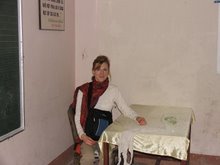
Yes, this is an actual teacher desk
Tam Dao was once a summer retreat for wealthy French families when France occupied Vietnam

This is what's left of one French villa--there were over 400 here at one time, but were destroyed by the Vietnamese people in the 1950s
Hanoi Time
Hanoi |
